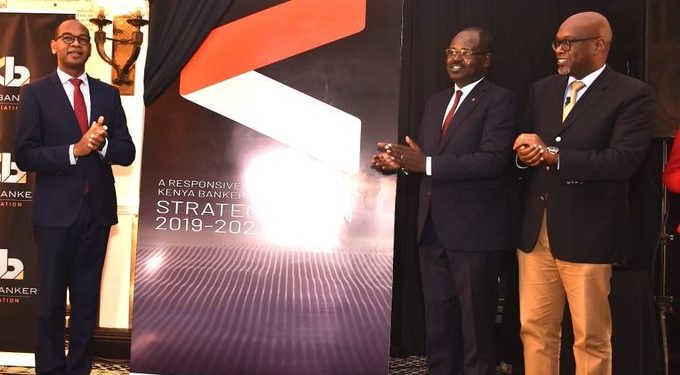KenyaBankers Association has released the industry’s five-year strategic plan (2019-2023) aiming to utilize deeper innovation and affordable loans to drive growth. KBA chairman and KCB Group MD, Joshua Oigara said the organization would build on gains made on the previous plan to improve service delivery to their customers.
KBA and CBK have implemented key projects such as modernization of the National Payment System through the Automated Clearing House, owned by KBA, and operated by CBK demonstrating Public-private partnerships.
In addition, KBA has implemented the Real Time Gross Settlement System (RGTS)and the Kenya Credit Information Sharing Initiative. There are also currency centres under construction in Meru, Nyeri, Nakuru, and Kisii.
Another innovative product is the PesaLink – East Africa’s first peer-to-peer and peer-to-government instant digital payments platform – enabling interconnection of 31 banks with transactions in excess of Sh180bn thus providing a 24/7 banking ecosystem.
KBA is working closely with sector regulators Central Bank of Kenya (CBK) and Capital Markets Authority (CMA) to lobby for vibrant and responsive policy and regulatory framework for the sustainability of the financial sector.
Moreover, KBA enhancing Association’s members’ engagement as well as boosting the capacity of the advocacy group’s secretariat.
At the end of September 2018, the Kenyan banking sector had an aggregate balance sheet of 4.41 trillion as a result of increased sectoral lending that grew from 2492.69 billion in June 2018 to Sh2538.68 billion in September 2018.
The report stated the sector asset base as Sh4.6 trillion, liquidity ratio of 50.4 percent and deposit base expanded to Sh3.4 Trillion as at May 2019.
Some of the anticipated risks include cyber risks, money laundering, macroeconomic dynamics which have led to investment in enterprise risk management frameworks.




